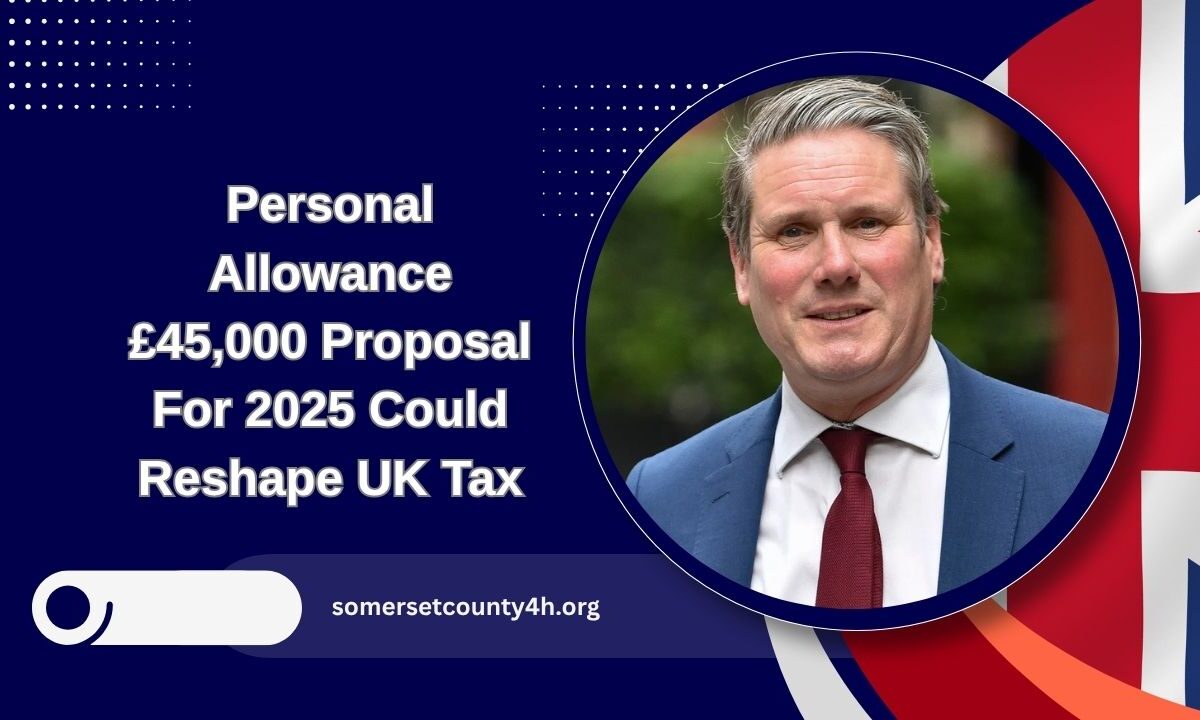As economic challenges persist and the cost of living continues to rise, the UK government is facing mounting pressure to implement bold tax reforms.
At the centre of this growing debate is a proposal to raise the Personal Allowance—the amount you can earn tax-free each year—from £12,570 to £45,000.
This would represent one of the biggest overhauls in the UK income tax system in decades. Advocates believe it could alleviate pressure on working households, put more money in people’s pockets, and stimulate economic growth.
How the Current Personal Allowance Works
As of 2025, the UK income tax structure operates as follows:
Income Tax Brackets (2025)
| Income Bracket | Tax Rate | Income Range |
|---|---|---|
| Personal Allowance | 0% | Up to £12,570 |
| Basic Rate | 20% | £12,571–£50,270 |
| Higher Rate | 40% | £50,271–£125,140 |
| Additional Rate | 45% | Over £125,140 |
Under this system, workers start paying tax on income just above £12,570, which many believe is outdated given current inflation and stagnant wage growth.
What the £45,000 Personal Allowance Proposal Would Change
If approved, the proposal to raise the Personal Allowance to £45,000 would dramatically alter the tax landscape:
- Anyone earning up to £45,000 would pay no income tax
- Those earning above £45,000 would only be taxed on income above the new threshold
- This would increase the tax-free income by £32,430
Estimated Impact:
- Low and middle-income workers: Pay zero income tax
- Higher earners: Benefit from a reduced effective tax rate
- Self-employed individuals and small businesses: Gain more disposable income
- Young professionals: Get a financial boost early in their careers
Why Many Are Supporting the Change
Supporters of the £45,000 allowance argue that the current system penalises hard work and doesn’t reflect today’s economic realities. The reform is seen as:
- Fairer for low- and middle-income earners
- A step towards reducing in-work poverty
- Likely to boost consumer spending and economic growth
- A disincentive against benefit dependency
They also believe it would enhance workforce participation and improve financial independence for millions of families.
Potential Economic Trade-Offs
While supporters highlight the social and economic benefits, critics warn that such a drastic increase in tax-free income would come at a high cost.
Economic Considerations:
| Potential Benefit | Possible Challenge |
|---|---|
| Boost in consumer spending | Annual revenue loss exceeding £100 billion |
| Lower welfare payments | May require cuts to public services |
| Higher employment participation | Questions around fiscal sustainability |
| Relief for working families | Debate over fairness to high vs. low earners |
Policymakers would need to consider funding alternatives, such as corporate tax increases or VAT adjustments, to balance the budget.
The Political and Social Debate
The proposal has sparked intense political debate. Advocates from all sides agree the system needs reform—but how far to go remains controversial.
While many applaud the simplicity and fairness of raising the Personal Allowance, others argue that the wealthiest earners stand to gain the most in absolute terms, making the change politically sensitive.
Nonetheless, the conversation has pushed income tax policy to the forefront of the national agenda.
The Personal Allowance £45,000 proposal could be a transformative shift in how income is taxed in the UK.
For millions of workers, it offers hope for real financial relief at a time when household budgets are stretched thin.
Whether or not it becomes law, this proposal has sparked a critical debate about fairness, growth, and modernisation of the tax system.
As discussions continue, one thing is clear: the current system is under pressure to evolve.
FAQs
What is the current Personal Allowance in the UK?
As of 2025, the Personal Allowance is £12,570. Any income above that is taxed based on standard rates.
What would change with the £45,000 Personal Allowance proposal?
You would pay no income tax on the first £45,000 of earnings, significantly lowering the tax burden for most workers.
Will this benefit all income groups?
Yes, but lower and middle-income earners would benefit the most proportionally. Higher earners would also gain, but with a smaller percentage impact.

